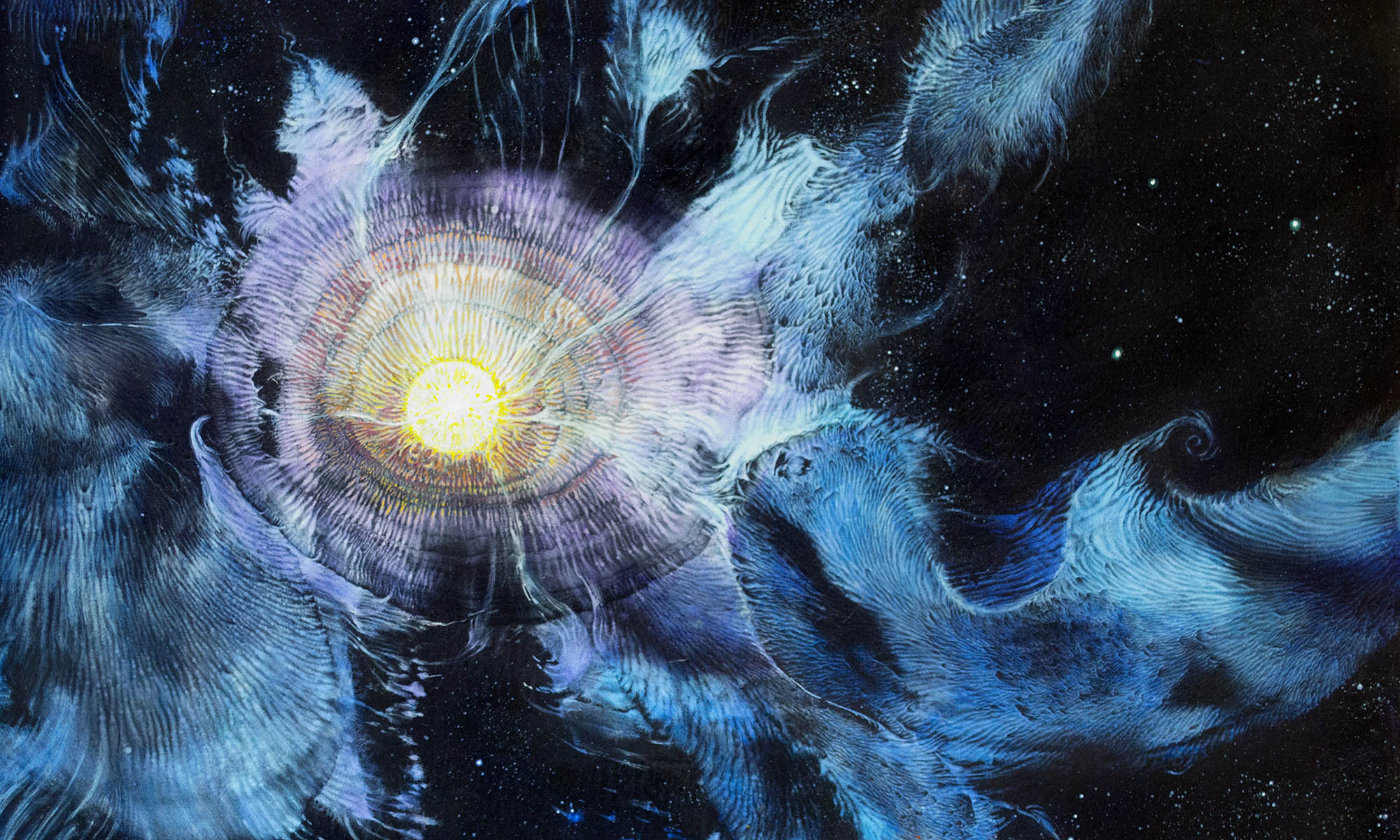By Gloria McMillan

“Golden Apples of the Sun” by Gloria McMillan
The Paris that the Surrealists saw after WW I was not free, cheerful, and gay. It was grim. F. Scot Fitzgerald tried to romanticize Paris in the 1920s but it smelled like a slaughterhouse. Fitz lied to please the aesthetes of his day. As the early surreal paints—Max Ernst, Andre Breton, Salvador Dali, Yves Tanguy, Joan Miro, Rene Magritte, Hans Arp—wended their way to the local wine cafe, their eyes were assaulted by the wreckage of men and women and children who were maimed over the treasures of culture. Countries fought as much over culture as over geographical territory, over terms—buzz words—like the German term ‘Kulturkampf’ or ‘guerre culturrel’ in French.
In peace time nations had to be content with simply censoring each other’s language, music, art, and literature, but in war, these nations could blow up everything, as well, leading to that famous sentence from a later war, “We had to destroy the village in order to save it.”
These returning artists, coming back from the front, saw that they were repeating themselves, their minds running in the rigid ruts of what we now call PTSD (post-traumatic stress syndrome), so they did everything possible and IMpossible to not celebrate the cultures and the norms and the histories of society, art styles, that had led to the series of wars upon wars. This was the first time an art movement was founded upon ART THERAPY.
A few latched onto Freud, such as Salvador Dali. the Belgian painter Magritte latched onto the linguistic approach of Ferdinand Saussure–that the words in a nation’s language had no “sacred” connection to the thing symbolize. Magritte’s famous painting “La Trahison des images—Ceci n’est pas une pipe” or in English “The Treachery of Images—This is not a pipe” tried to break the magic of national feelings about language. If we were to realize that the lovely words each language has for things are arbitrary as much as pulling words from a hat, then perhaps one less thing to have wars over, oui? How many who see this painting online or in its original at the LA County Art Museum recognize its origin in PTSD and post-war art therapy? (Be honest.)
Few countries will have wars over “ready mades,” either like DuChamp’s Urinal installation, (until that urinal gets “monetizes.”)
The Surrealist term “aleatory” was used for their scientific and artistic experiments with chance patterns. One surreal “readymade” poetry technique was to throw words into a hat and make poems of what came out. Or paint the mysterious image of dreams if not too PTSD. Then Max Ernst hit upon another aleatory technique: Decalcomania. This is the same root word for commercial decals (pictures with sticky basks) that are stuck upon objects. But artists loads a sheet of glass with paint and list it off quickly so that random rivulets formed. They worked into the accidental shapes. See any online collection of Max Ernst’s art. A noted science fiction and horror magazine illustrator, Alan M. Clark is a skilled decalcomania painter. I was fortunate to view Alan’s demonstrate of the techniques in Sept. 2022. Since then I have been making a series of decalcomania paintings.
Hope you like these paintings released today to honor the Surrealists and their struggles.

“Silver Apples of the Moon,” by Gloria McMillan

